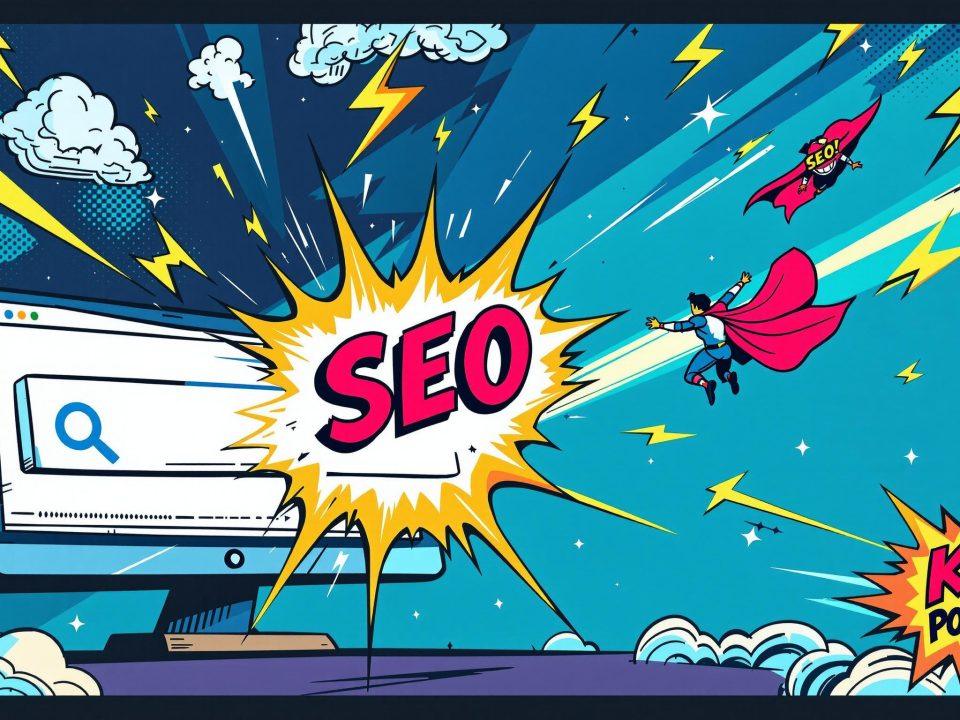Calling all blog post aficionados! Are you ready to say goodbye to the days of slaving over amazing content, only to see it quickly forgotten? I know firsthand how disheartening that can be. But what if I told you there’s a way to make your blog posts work smarter, not harder? A way to keep them relevant and engaging, without any extra effort on your end.
That’s where repurposing blog content comes in. It’s like giving your best posts a new lease on life, and the results can be mind-blowing. Imagine reaching new audiences, skyrocketing your traffic, and keeping your readers engaged, all with the content you’ve ready created. Sounds pretty awesome, right?
Ways to Repurpose Blog Content for Social Media
You’ve spent hours crafting the perfect blog content, pouring your heart and soul into every word. But once you hit publish, the real work begins. How do you get that content in front of as many eyeballs as possible?
The answer: you can repurpose blog content for social media. Trust me, I’ve been doing this for years and the results speak for themselves.
Create Social Media Posts
One of the easiest ways to repurpose blog content is by turning key points into eye-catching social media graphics. Tools like Canva or Adobe Express make it a breeze to create visually appealing images that highlight the most important takeaways.
Share these graphics on Instagram, Facebook, Twitter, and Pinterest to drive traffic back to your original post. I’ve seen a single well-designed graphic generate thousands of clicks. It’s a game-changer.
Turn Blog Posts into Twitter Threads
Twitter threads are a goldmine for repurposing content. Break your blog post down into bite-sized chunks of information and share them as a series of connected tweets.
This allows you to provide valuable insights in a digestible format while encouraging users to click through for the full scoop. I’ve had threads go viral and bring in a flood of new readers to my blog. Don’t sleep on this strategy.
Repurpose Blog Content into Instagram Stories
Instagram Stories are the perfect place to repurpose blog content and engage with your audience in a more casual setting. Create a series of slides that summarize the main points of your post, add interactive elements like polls or questions, and include a swipe-up link to direct users to the full article.
I like to think of Stories as a teaser trailer for my blog. Give them just enough to pique their interest, then reel them in with a strong call-to-action.
Share Blog Post Snippets on Social Media
Sometimes the most impactful social media content is the simplest. Extract compelling quotes, statistics, or key takeaways from your blog posts and share them as standalone updates.
These snippets can spark your audience’s curiosity and encourage them to dive deeper into the full post. I’ve found that thought-provoking or surprising tidbits in social media posts tend to perform best.
How to Repurpose Blog Content into Video Content
In today’s digital landscape, video reigns supreme. If you’re not repurposing your blog content into video format, you’re missing out on a massive opportunity to expand your reach and engage your audience on a deeper level.
Create Short Video Clips from Blog Posts
Transform your blog posts into short, snackable video content that can be shared across various social media platforms. Use tools like Lumen5 or Animoto to create videos that summarize the main points of your post, and include visuals and text overlays to make the content more dynamic.
I’ve found that these types of videos perform exceptionally well on Twitter and LinkedIn, where users are looking for quick hits of valuable information. Don’t be afraid to experiment with different styles and formats until you find what resonates with your audience.
Turn Blog Posts into YouTube Videos
If you really want to take your content to the next level, consider turning your blog posts into full-fledged YouTube videos. Use your post as a script or outline, and add in additional examples, demonstrations, or personal anecdotes to make the content more engaging for your viewers.
I’ve had great success with this approach, especially for more in-depth or tutorial-style blog posts. The key is to provide value that goes above and beyond what’s included in the written version. Give your viewers a reason to watch until the end and subscribe for more.
Repurpose Blog Content into TikTok Videos
TikTok is the newest kid on the block in recent years, but it’s become a powerhouse platform for content creators. Adapt your blog content for TikTok by creating short, attention-grabbing videos that highlight key tips, tricks, or insights from your posts.
Use trending music, filters, and hashtags to make your content more discoverable, and encourage viewers to visit your blog for more detailed information. I’ve seen TikTok drive a ton of traffic to my clients’ websites, especially from younger audiences who may not have found them otherwise.
Create Video Summaries of Blog Posts
Sometimes the best way to repurpose blog content is to simply summarize a blog post in video form. Record a brief video that hits the main points and key takeaways, and embed it within the original post or share it on social media.
This approach works well for time-strapped readers who want to get the gist of your content without diving into a lengthy article. It’s also a great way to add a personal touch and build a stronger connection with your audience. Don’t be afraid to let your personality shine through.
Repurposing Blog Content for Email Marketing
Email marketing is one of the most effective ways to nurture leads and build lasting relationships with your audience. But coming up with fresh content for your emails can be a challenge, especially if you’re already stretched thin.
That’s where repurposing comes in. By leveraging your existing blog content, you can create engaging emails that provide value to your subscribers and keep them coming back for more.
Create Email Newsletters from Blog Posts
One of the easiest ways to repurpose blog content for email is to create a newsletter that highlights your latest and greatest posts. Curate a selection of your best articles and provide brief summaries of each one, along with links to read the full versions on your website.
I’ve found that this approach works well for keeping my subscribers informed and engaged, without overwhelming them with too much information at once. It’s also a great way to drive traffic back to my blog and boost my overall SEO efforts.
Use Blog Post Snippets in Email Campaigns
Another effective way to repurpose your blog content for email is to use snippets or excerpts from your posts as teasers or standalone tips. These bite-sized pieces of content can be used to entice readers to click through to the full article, or simply to provide value and build trust with your audience.
I like to think of these snippets as “email amuse-bouches” – little tastes of what’s to come that leave readers wanting more. The key is to choose excerpts that are compelling, actionable, and relevant to your subscribers’ interests.
Repurpose Blog Content for Email Marketing
Finally, don’t forget about your evergreen content – those timeless blog posts that continue to provide value month after month, year after year. These are the perfect candidates for repurposing in your email marketing campaigns.
You can use evergreen posts to create automated email sequences that nurture new subscribers, or as part of seasonal campaigns that highlight relevant topics throughout the year. I’ve had great success with this approach, especially for my “greatest hits” content that consistently drives traffic and engagement.
The beauty of repurposing evergreen content is that it allows you to get more mileage out of your best work, without having to constantly churn out new ideas. It’s a smart way to work smarter, not harder, and keep your email marketing efforts running like a well-oiled machine.
Turning blog posts into social media graphics, Twitter threads, Instagram Stories, and videos can massively boost your reach. Even simple quotes or stats shared on social can spark interest. For deeper engagement, repurpose blog content for YouTube or TikTok videos and email newsletters to keep subscribers hooked.
Turning Blog Posts into Podcast Episodes
You know what I love about podcasts? They’re the perfect way to repurpose blog content and reach a whole new audience.
I’ve been doing this for years, and let me tell you, it’s a game-changer. You take your best-performing blog posts, the ones that really resonated with your readers, and you turn them into engaging podcast episodes. It’s like giving your content a second life.
Record Blog Posts as Podcast Episodes
Here’s how it works: You sit down with your blog post in front of you, and you start recording. You don’t just read it word for word, though. You add your own commentary, your own insights, and your own personality. You make it conversational, like you’re talking to a friend.
I remember when I first started doing this, I was nervous as hell. But then I realized, hey, I wrote this content. I know it inside and out. So I just started talking, and before I knew it, I had a full-fledged podcast episode on my hands.
Interview Experts on Topics Covered in Blog Posts
But you don’t have to do it alone. One of my favorite ways to repurpose blog content for podcasts is to bring in experts. You know, the people who really know their stuff when it comes to the topics you cover in your blog posts.
You reach out to them, invite them on your show, and have a conversation. You ask them questions, you pick their brain, and you create an episode that’s even more valuable than the original blog post. It’s like adding an extra layer of depth and expertise to your content.
Create Podcast Series Based on Blog Post Themes
And here’s the kicker: You can create entire podcast series based on the themes you cover in your blog posts. Let’s say you have a bunch of posts about content marketing. You can turn that into a multi-part podcast series, diving deep into each aspect of the topic.
You can have episodes on content creation, distribution, promotion, and more. You can bring in different guests for each episode, and create a comprehensive resource that your listeners can really sink their teeth into.
Repurposing Blog Content for Guest Posts and Syndication
But podcasts aren’t the only way to repurpose blog content. You can also use it for guest posts and syndication. This is where you take your existing content and share it on other platforms, reaching new audiences and building your brand.
Adapt Blog Posts for Guest Posting Opportunities
One way to do this is to adapt your blog posts for guest posting opportunities. You find blogs and websites in your niche that accept guest posts, and you pitch them a version of your existing content.
But here’s the thing: You don’t just copy and paste your blog post and call it a day. You tailor it to the new audience, you add a fresh perspective, and you make it unique. You show the editor that you’re not just rehashing old content, but creating something new and valuable for their readers.
Syndicate Blog Content on Other Websites
Another way to repurpose blog content is through syndication. This is where you partner with other websites and blogs to share your content on their platform.
It’s a win-win situation: They get high-quality content to share with their audience, and you get exposure to a new group of readers. Plus, you can include a link back to your original blog post, driving traffic and building your backlinks.
Update and Repurpose Older Blog Posts for New Audiences
But what about those old posts that are just gathering dust in your archives? Don’t let them go to waste. You can update and repurpose blog content for new audiences.
Take a look at your analytics and see which posts were popular back in the day. Then, give them a fresh coat of paint. Update the information, add new insights, and make them relevant for today’s readers. You can even turn them into new formats, like infographics or videos.
Creating Infographics and Visual Content from Blog Posts
Speaking of infographics and videos, let’s talk about how you can create visual content from your blog posts. Because let’s face it, sometimes people just don’t want to read a wall of text. They want something they can quickly digest and share with their friends.
Design Infographics Based on Blog Post Data
One way to do this is to design infographics based on the data and statistics you include in your blog posts. You take those numbers and turn them into a visually appealing graphic that people can easily understand and remember.
For example, let’s say you have a blog post about the benefits of exercise. You might include a statistic like “regular exercise can reduce your risk of heart disease by 50%.” You can take that statistic and turn it into an eye-catching infographic that people will want to share on social media.
Create Visual Summaries of Blog Posts
Another way to create visual content from your blog posts is to create visual summaries. This is where you take the key points and takeaways from your post and turn them into a graphic or video.
You might create a series of images with text overlays, or a short animated video that highlights the main ideas. The goal is to make your content more accessible and shareable, and to reach people who might not have the time or inclination to read a full blog post.
Turn Blog Post Lists into Shareable Graphics
Finally, if your blog post includes a list of tips, resources, or ideas, you can turn each item into its own shareable graphic. This is a great way to create a ton of visual content from a single blog post.
For example, let’s say you have a post called “10 Ways to Boost Your Productivity.” You can create 10 separate graphics, each highlighting one of the tips. Then, you can share them on social media, or even create a slideshow or carousel post.
The possibilities are endless when it comes to repurposing your blog content. By turning your posts into podcasts, guest posts, infographics, and more, you can reach new audiences, build your brand, and get more mileage out of your hard work.
So what are you waiting for? Start repurposing your content today.
Turning your top blog posts into podcasts, guest articles, infographics, and more not only reaches new audiences but also breathes fresh life into your content. Add a personal touch or expert insights to make it even more engaging.
Repurposing Blog Content for Slideshare Presentations
I’ve been repurposing blog content into Slideshare presentations for years.
It’s a game-changer.
You take your best performing blog posts, extract the key insights, and turn them into engaging slide decks that can reach a whole new audience on Slideshare.
Convert Blog Posts into Slideshare Decks
Here’s how it works:
First, identify your top blog posts. Look for the ones that got the most traffic, shares, and engagement.
Then, break down the main points and takeaways into concise slides. Use compelling visuals, clear headlines, and minimal text to make your content more digestible and memorable.
Include a link back to the original blog post for viewers who want to dive deeper into the topic.
Create Slideshare Summaries of Blog Post Series
Got a series of related blog posts? Turn them into a Slideshare summary.
Curate the key insights from each post into a cohesive narrative that flows from one slide to the next. This gives your audience a high-level overview of the topic and encourages them to explore the individual blog posts for more details.
I’ve found this approach particularly effective for repurposing long-form content like ultimate guides or in-depth tutorials.
Repurpose Blog Content into Slideshare Presentations
Speaking of long-form content, Slideshare is the perfect platform for breaking it down into more digestible chunks.
I recently took a massive 5,000-word blog post and turned it into a Slideshare deck with just 20 slides. Each slide focused on one key takeaway, with minimal text and eye-catching visuals.
The result? The Slideshare got over 10,000 views in the first week, driving a ton of traffic back to the original post.
By repurposing your blog content into Slideshare presentations, you can:
– Reach a new audience on a platform that gets over 80 million unique visitors per month
– Make your content more shareable and easier to consume
– Drive traffic back to your website and blog
– Establish your brand as a thought leader in your industry
So go ahead, dust off those high-performing blog posts and give them new life on Slideshare. Your audience (and your analytics) will thank you.
Using Blog Posts to Create Case Studies and Testimonials
You know what’s even more powerful than a blog post? A case study or testimonial that proves your content actually works.
I’ve been using blog posts as a starting point for creating compelling case studies and testimonials for years. Here’s how:
Showcase Customer Success Stories from Blog Posts
If you often feature real-world examples or customer success stories in your posts, repurpose blog content into standalone case studies.
Reach out to the customers mentioned and ask if you can interview them for a more in-depth look at their experience. Get specific about the challenges they faced, the solutions they implemented, and the results they achieved.
Then, package that information into a visually engaging case study that showcases the value of your product or service. Include quotes, data points, and before-and-after comparisons to make the case study more compelling.
Create Case Studies Based on Blog Post Topics
Even if your blog posts don’t mention specific customers, you can still use them as inspiration for new case studies.
Look for posts that cover topics or themes that align with your target audience’s pain points. Then, reach out to customers who have had success in those areas and ask if you can feature their story in a case study.
Use the blog post as a starting point for the case study, but dive deeper into the customer’s specific situation and results.
Repurposing Blog Content for Online Courses and Webinars
Want to take your content repurposing to the next level? Turn your blog posts into online courses and webinars.
I know, I know. Creating an online course or webinar sounds like a lot of work. But trust me, if you’ve got a backlog of high-quality blog content, you’re already halfway there.
Create Online Courses Based on Blog Post Series
If you have a series of blog posts that cover a specific topic in depth, you’ve got the makings of an online course.
Start by outlining the key takeaways and action items from each post. Then, organize them into a logical sequence that builds on each concept and guides students towards a specific outcome.
Next, flesh out each lesson with additional examples, exercises, and resources. Record video lectures or screencasts to walk students through the material, and include quizzes or assignments to reinforce their learning.
Finally, package it all up into a cohesive online course that provides value to your target audience. You can host it on your own website or use a platform like Udemy or Teachable to reach a wider audience.
Turn Blog Posts into Webinar Presentations
Webinars are a great way to repurpose your blog content into an engaging, interactive format.
Start by identifying a blog post or series of posts that would make a compelling webinar topic. Then, create an outline that highlights the key points and takeaways.
Next, create a slide deck that visually represents your content. Use clear headlines, minimal text, and eye-catching graphics to keep your audience engaged.
Finally, practice your presentation and get ready to deliver it live to your audience. Be sure to include interactive elements like polls, Q&A sessions, or live demonstrations to keep things interesting.
Use Blog Post Content to Develop Course Modules
Even if you’re not ready to create a full-fledged online course, you can still use your blog content to develop individual course modules.
Identify a specific skill or concept covered in one of your blog posts, and create a standalone lesson around it. Record a video tutorial, create a worksheet or exercise, and package it up as a mini-course or lead magnet.
You can offer these course modules as a free opt-in to grow your email list, or use them as a starting point for a larger course down the line.
By repurposing older content pieces into online courses and webinars, you can:
– Provide more value to your audience by going deeper into specific topics
– Establish your brand as a go-to resource for education and training in your industry
– Generate leads and revenue by offering paid courses or webinars
– Reach a wider audience by tapping into the growing demand for online learning
So take a look at your blog content with fresh eyes, and start brainstorming ways to turn it into engaging, educational content that your audience will love.
Turning blog posts into Slideshare presentations and case studies breathes new life into your content, reaching wider audiences and proving the real-world impact of your work. It’s a smart move to boost traffic and engagement while showcasing expertise.
Conclusion
Repurposing blog content is a game-changer for any content creator looking to maximize their impact. By breathing new life into your existing posts, you can reach new audiences, boost your traffic, and keep your readers coming back for more.
Your content is a superstar, just waiting for its moment in the spotlight. Mix things up, try new formats, and watch as your audience grows and falls in love with your unique voice.
Want to supercharge your content? Repurposing your blog posts is the key. Try it now and watch your reach soar!







